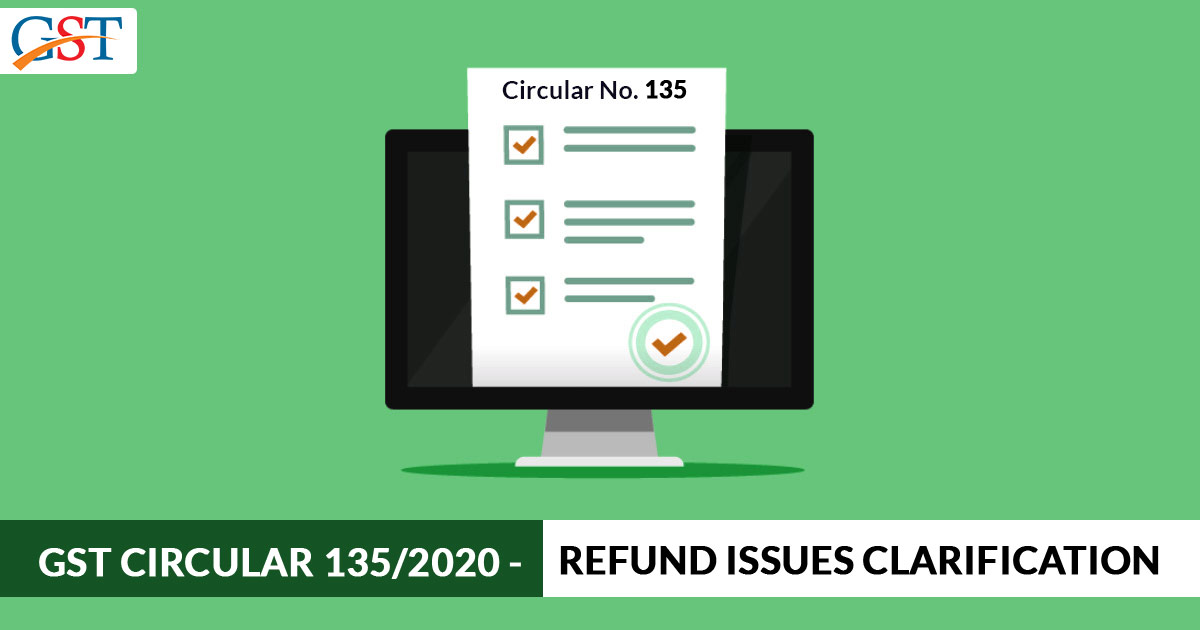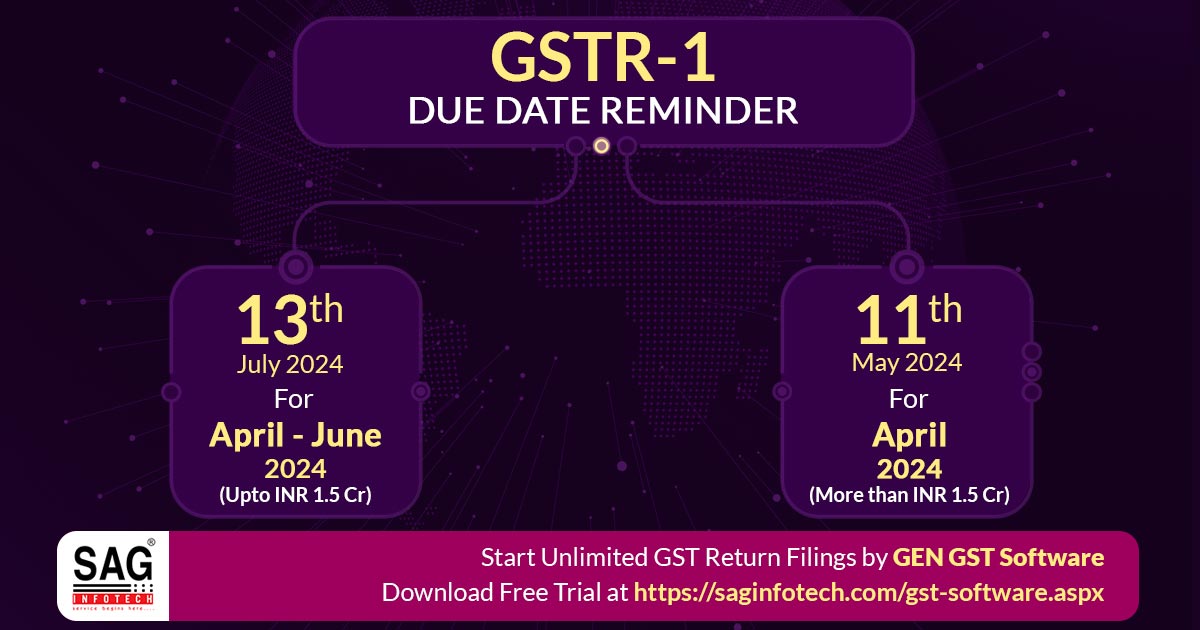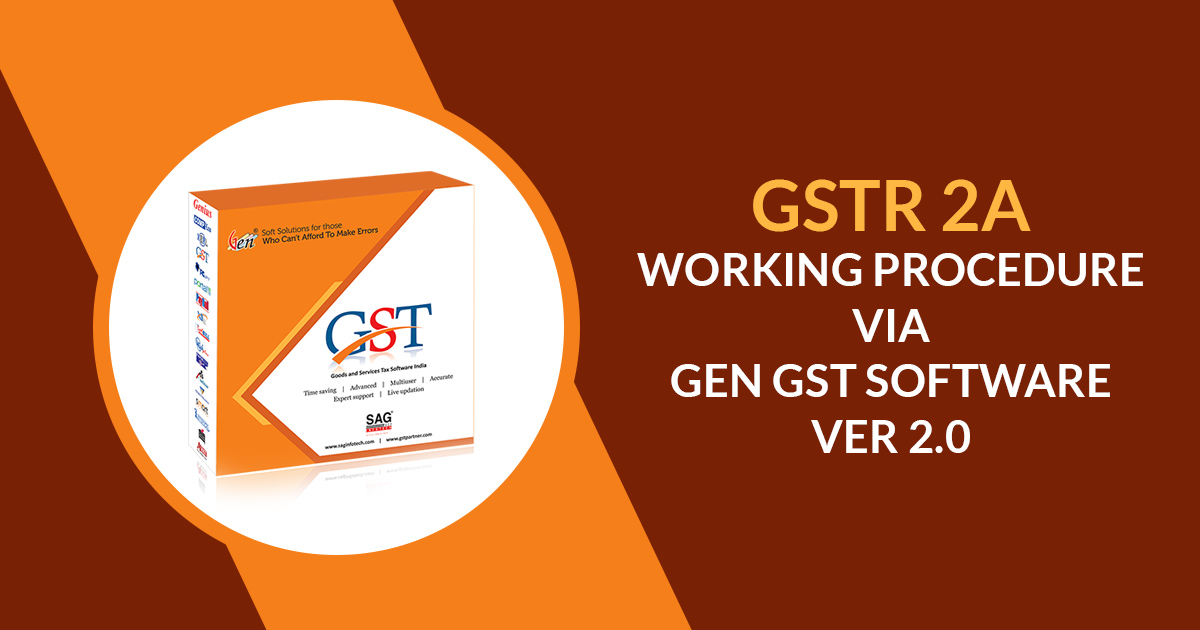
Central Board of Indirect Taxes and Customs (CBIC) on 31st March 2020 released a circular with No.135/05/2020 in Subject of Clarification on refund related issues-Reg. The Circular actually provides clarification on some of the issues relating to GST refunds which have been received by Various representations.
In order to clarify all the reported issues and to ensure uniformity in the implementation of the provisions of the law in this regard across the field formations, the Board, in the exercise of its powers conferred by section 168 (1) of the Central Goods and Services Tax Act, 2017 or CGST Act, clarifies the issues, details are given below.:
Bunching of Refund Claims Across Financial Years
- It may be reviewed that the limitation or restriction on clubbing of tax periods across various financial years was placed in Circular No. 37/11/2018-GST dated 15.03.2018 vide para 11.2. It was later canceled being subsumed in the Master Circular on Refunds No. 125/44/2019-GST dated 18.11.2019 and the said restriction as above have been continued to vide Paragraph 8 of the Circular No. 125/44/2019-GST dated 18.11.2019, The statement is given below:
“The applicant, at his option, is eligible to file a refund claim for a tax period or by grouping successive tax periods. The tax period for refund claim has been filed, cannot spread across different financial years. A person who is registered and has a turnover of up to Rs. 1.5 crore approx in the preceding or the current financial year and opting to file form GSTR-1 on a quarterly basis 
“However, refund claims under categories listed at (a), (c) and (e) in para 3 above need to be filed by the applicant chronologically. It means that an applicant, after filing a refund application under any of these categories, is subsequently not allowed to file another refund claim under the same or any previous period. This restriction, shall not apply in such cases where a completely new application is being filed following a deficiency memo having been issued earlier.”
- Delhi High Court in the case of M/s Pitambra Books Pvt Ltd. has come up with an Order dated 21.01.2020 in para 13 of the said order the court has stayed the rigor of para 8 of Circular No. 125/44/2019-GST dated 18.11.2019. The high court also directed the Government to either open the online portal to enable the petitioner to file the tax refund electronically or accept the same manually within 4 weeks from the Order. In the same order, para 12 states that Circulars can be removed but not supplement the law. Circulars might ease the law by granting administrative relief beyond relevant provisions of the statute, however, the Central Government doesn’t have the power to withdraw benefits or impose stricter rules or conditions than postulated by the law.
- Identical issues have been occurred in some other representations also, especially some of them which are received from the merchant exporters where they have received the supplies of goods in the last quarter of a Financial Year and have made exports in the next Financial Year. The restriction imposed considering para 8 of the master refund circular prevents the refund of ITC collected in such cases as well.
- On scrutiny of the arrangements under sub-section (3) of section 16 of the Integrated Goods and Services Tax Act, 2017 and sub-section (3) of section 54 of the CGST Act, there is no bar in claiming refund by grouping different months across successive FY.
- The matter has been checked and it has been decided to remove the limitation or restriction on grouping (clubbing) of tax periods across Financial Years. As per the new decision, Circular No. 125/44/2019-GST dated 18.11.2019 has been modified to that extent where the restriction on bunching/grouping/ clubbing of refund claims across financial years shall not apply.
Refund of Accumulated ITC on Account of Reduction in GST Rate
- The Board has noticed that some of the applicants are seeking a refund of unutilized ITC on account of an inverted duty structure where the reversal is due to GST rate change Grab the information of revised GST slab rates on consumer products in India, Although the GST council finalized the slab rates like 5%, 12%, 18% and 28%. Read more on the same goods. It is being claimed that collection of ITC in such a case is also covered as accumulation on account of inverted duty structure and such applicants have sought refund of accumulated ITC under clause (ii) of sub-section (3) of section 54 of the CGST Act.
- It might be noticed that refund of aggregated ITC in wording provision (ii) of sub-section (3) of section 54 of the CGST Act is available in which the credit has accumulated on account of rate of tax being higher on input compared to the rate of tax on output. It needs to be considered that refund of accumulated ITC under clause (ii) of sub-section (3) of section 54 of the CGST Act would not be applicable in cases where the input and the output supplies are the same.
Change in Manner of Refund of Tax Paid on Supplies
- Para 3 of Circular No. 125/44/2019-GST dated 18.11.2019, categorizes the refund applications that can be filed in FORM GST RFD-01 as under:
- Refund of unutilized ITC on account of exports without payment of tax;
- Refund of paid tax on services export with payment of tax;
- Refund of unutilized ITC on account of supplies made to SEZ Unit/SEZ Developer without payment of tax;
- Refund of tax paid on supplies made to SEZ Unit/SEZ Developer with payment of tax;
- Refund of unutilized ITC on account of accumulation because of inverted tax structure;
- Refund to a supplier of tax paid on deemed export supplies;
- Refund to a recipient of tax paid on deemed export supplies;
- Refund of excess balance in the electronic cash ledger;
- Refund of excess payment of tax;
- Refund of tax paid on an intra-State supply which is subsequently held to be interState supply and vice versa;
- Refund on account of assessment/provisional assessment/appeal/any other order;
- Refund on account of “any other” ground or reason.
- Refund of tax paid that belong in categories specified at S. No. (i) to (l) above i.e. refund claims on supplies other than zero-rated supplies, there will be no separate debit of ITC from electronic credit ledger is required to be mentioned by the applicant at the time of filing refund claim, being the claim of tax already paid. However, the payment of total tax would have been normally done by the applicant by debiting the tax amount from both electronic credit ledger and electronic cash ledger. At present time, in such type of cases, the relevant amount of refund is getting paid in cash even when such payment of tax or any part thereof, has been made through ITC.
- This matter could result in allowing unintended encashment of credit balances, this issue has been seeking the attention of the Government. Due to it, sub-rule (4A) of Notification No.16/2020-Central Tax dated 23.03.2020, has been included in rule 86 of the CGST Rules, 2017 which states that:
“(4A) Where a person who is registered has claimed the refund of any amount paid as tax, wrongly paid, or paid in addition for which debit has been made from the electronic credit ledger, the said amount, if found appropriate, shall be re-credited to the electronic credit ledger by the proper authorities by an order made in FORM GST PMT-03.”
- Additionally, from the same notification, sub-rule (1A) has also been inserted in rule 92 of the CGST Rules, 2017 that :
“(1A)Where, upon checking and reviewing of the filled application of refund of any amount paid as tax other than the refund of tax paid on zero-rated supplies or deemed export, the relevant authority is satisfied that a refund under sub-section (5) of section 54 of the Act is due and need to be paid to the applicant, he shall make an order in FORM RFD-06 mentioning the relevant refundable amount to be paid, in cash, proportionate to the amount debited in cash against the total amount paid for discharging tax liability for the relevant period, mentioning therein the amount balanced against any outstanding demand under the Act or existing law and the balance refundable amount and for the residual amount which has been debited from the electronic credit ledger for paying such tax, the proper officials shall issue FORM GST PMT-03 re-crediting the relevant amount as Input Tax Credit in electronic credit ledger.”
- The summarized overall effect of the above-mentioned changes is that any such refund of tax paid on supplies other than zero-rated supplies will now be admissible proportionately in the respective original mode of payment i.e. in cases of refund, where the tax to be refunded has been paid by debiting both electronic cash and credit ledgers, the refund to be paid in cash and credit shall be calculated in the same proportion in which the cash and credit ledger has been debited for discharging the total tax liability for the relevant period for which application for refund has been filed. Such amount, shall be accordingly paid by issuance of order in FORM GST RFD-06 for amount refundable in cash and FORM GST PMT-03 to re-credit the amount attributable to credit as ITC in the electronic credit ledger.
Guidelines for Refunds of Input Tax Credit under Section 54(3)
- In terms of para 36 of circular No. 125/44/2019-GST dated 18.11.2019, the refund of ITC availed in respect of invoices not reflected in FORM GSTR-2A was also admissible and copies of such invoices were required to be uploaded. However, in wake of insertion of sub-rule (4) to rule 36 of the CGST Rules, 2017 vide notification No. 49/2019-GST dated 09.10.2019, various references have been received from the field formations regarding admissibility of refund of the ITC availed on the invoices which are not reflecting in the FORM GSTR-2A of the applicant.
- The complete issue has been reviewed and it has been decided that the refund of collected ITC shall be limited to the ITC as per those invoices details uploaded by the supplier in FORM GSTR-1 and reflected in the FORM GSTR-2A of the applicant. By considering its para 36 of the circular No. 125/44/2019-GST, dated 18.11.2019 is modified to that extent.
New Requirement to Mention HSN/SAC in Annexure ‘B’
- References have also been received from the field formations that HSN wise details of goods and services are not available in form GSTR-2A

- After reviewing the issue, and considering that such a distinction is important regarding the provisions related to refund, where a refund of credit on Capital goods and/or services is not applicable in certain cases, that’s why it has been decided to modify the said statement. Which was done in Annexure-B of the circular No. 125/44/2019-GST, dated 18.11.2019..
- A relevant but modified statement format is provided for applicants to upload the details of invoices reflecting in their FORM GSTR-2A. The applicant is now also required to mention HSN/SAC code from the inward invoices. In cases where the supplier is not mandated to mention HSN/SAC code, the applicant can also eliminate mentioning HSN/SAC code in respect of such inward supplies.
It is also requested in the circular that relevant trade notices may be issued to publicize the contents of this circular.
The circular also stated that in case of any difficulty in implementation of this Circular, then brought that matter to the notice of the Board.
The Notification released by the Central Board of Indirect Taxes and Customs on 31st March 2020 provides clarification on some of the issues related to GST refunds which have been received by Various representations. Most of the details have been covered here but we would suggest you to go through the released PDG for better understanding and exact statements.